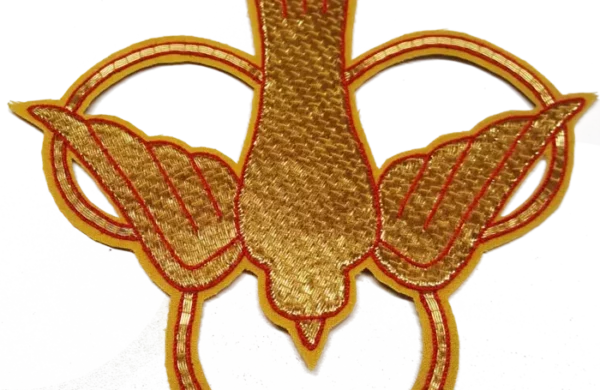
To create a vibrant Pentecost stole, start with a red stole, such as the Ely Crown Stole, featuring plain fabric near the chest area. Choose a gold Dove Applique, like the goldwork Dove with imitation Japanese Goldwork threads, which may include colored thread accents. For couching, use Goldwork threads like Imitation Japanese Gold Thread, Gilt gold twist, or Au Ver a Soie Gold Thread.
Like this:
Like Loading...
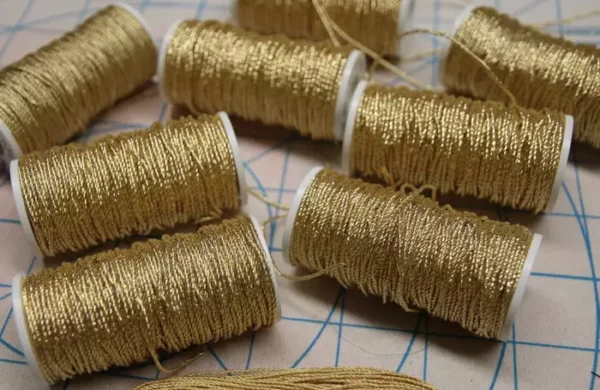
Gilt Twist goldwork threads, particularly in sizes No. 3 or No. 4 for outer edges and No. 1 1/2 or No. 2 for smaller areas, beautifully enhance goldwork appliques in embroidery. The choice of twist size depends on the design’s details and the width of the gold edge, ensuring a neat finish with one pass of stitching in pairs.
Like this:
Like Loading...
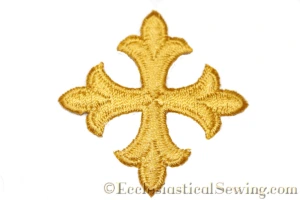
Ecclesiastical Sewing sells small iron-on cross appliques. There are a variety of colors and sizes. These little crosses can be used on the neckline of a stole; they can be used to decorate the front of a stole; or they could be used on chalice veils, burses, or other church vestments.
Like this:
Like Loading...
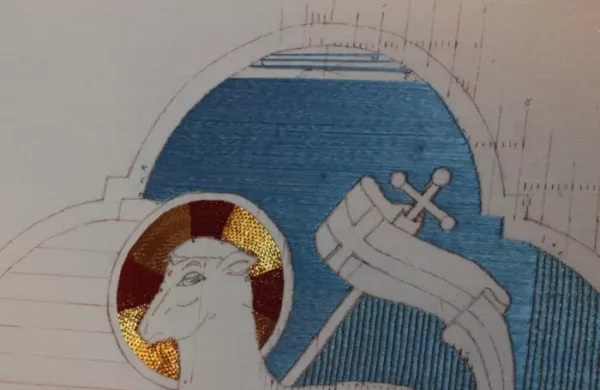
In the Agnus Dei Ecclesiastical Embroidery Project, significant progress has been made on the upper sky. Using long-laid stitches and horizontal guide marks, the detailed stitching maintains parallel and straight alignment. Frequent thread changes are necessary due to the 6 1/2″ stitch width, but the process speeds up as intricate details around the cross are left behind. The joy of completing a major portion of the sky-laid work is evident, with two-thirds now finished.
Like this:
Like Loading...
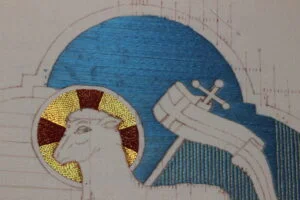
The update on the larger of the Agnus Dei pieces’ from The Tale of Two Lambs.
Like this:
Like Loading...
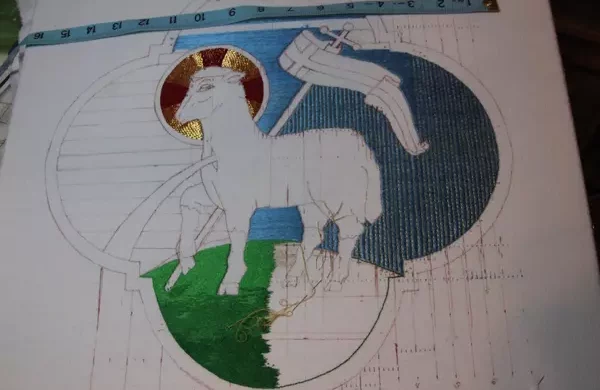
The Ecclesiastical Embroidery Design for the Altar Frontal features the largest Lamb, measuring about 15″ in width. The sky is stitched in Royal Floss, a vivid blue from the Belding Brothers Company. Goldwork details use #4 Smooth Passing with Silk Core from Access Commodities. The design aims for a bright and radiant sky, symbolizing the glorious Resurrection.
Like this:
Like Loading...
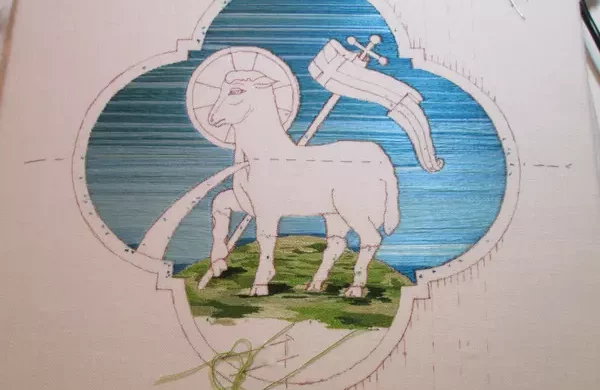
Starting with a small Agnus Dei hand embroidery design, The Tale of Two Lambs turned into two projects – in sizes small and large. Limited Ecclesiastical designs led to this traditional choice. The smaller Agnus Dei, at 8 1/2″, fits a chasuble’s back. As the project continued, minor changes improved the second design. The small lamb’s hill, initially stitched in camouflage green, became serene blue. Using Soie Ovale for the sky presented challenges, but the finished product was pleasing. Careful placement of gold passing thread helped secure the silk strands, enhancing the design.
Like this:
Like Loading...
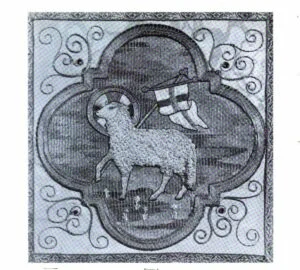
Tried a new embroidery stitch, feeling a bit scared. Sometimes, fear stops from starting. But taking a step, stitching, and learning are important. Each stitch is like a step toward getting better. It’s okay not to be perfect. The important thing is to keep trying, growing, and enjoying the journey.
Like this:
Like Loading...
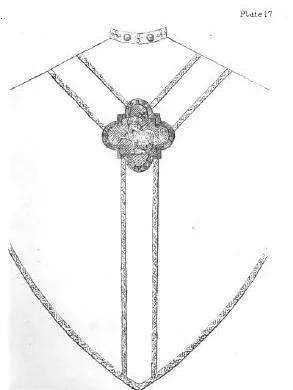
Old Books Make Great Reads: Discovering the rich history of Opus Anglicanum through the pages of vintage books, details of Ecclesiastical Embroidery and Altar Frontals. These treasures provide insights into the origins of vestments, such as the chasuble and alb, and their evolution over centuries.
Like this:
Like Loading...
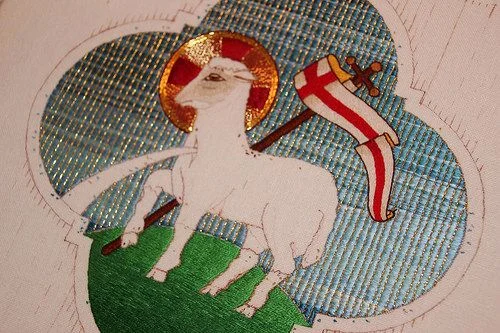
Making of the Littlest Lamb in The Tale of Two Lambs. Created on Alba Maxima linen from Hedgehog Handworks, this lamb comes to life with stitches and delicate shading. The linen provides a perfect canvas, and the project is stretched on an Evertite Frame. Various hand embroidery techniques, including long and short stitch shading, satin stitch, laid work, goldwork couching, split stitch, and stem stitch outlining, contribute to the lamb’s intricate details.
Like this:
Like Loading...
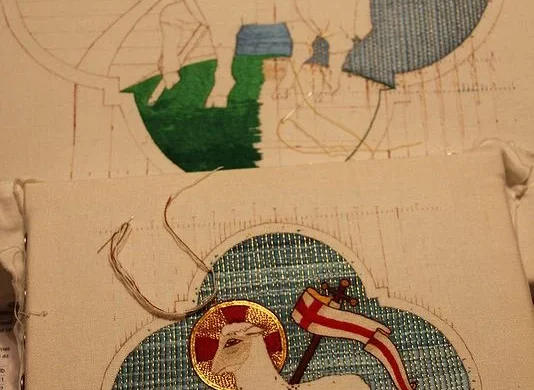
“The Tale of Two Lambs” is about making special decorations for a church, like Easter cloths. At first, the results weren’t good so, learning more became the focus. The Angus Dei featuring two lambs—one small for a robe and one big for an altar cloth. The story is about learning and getting better at sewing with silk and gold threads, with more things to find out along the way.
Like this:
Like Loading...












You must be logged in to post a comment.